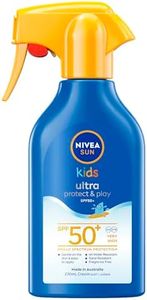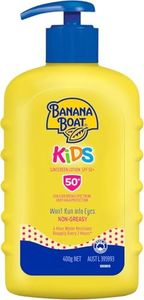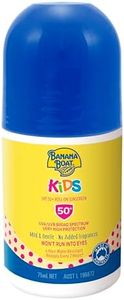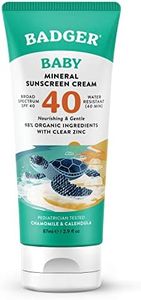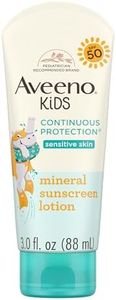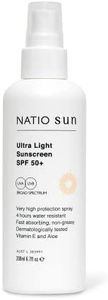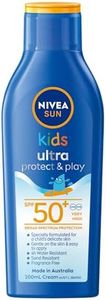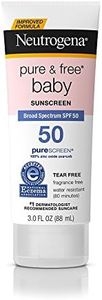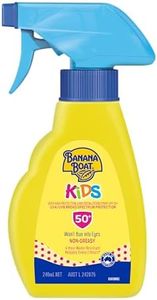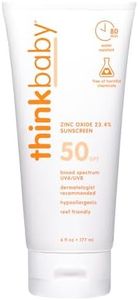We Use CookiesWe use cookies to enhance the security, performance,
functionality and for analytical and promotional activities. By continuing to browse this site you
are agreeing to our privacy policy
10 Best Kids Sunscreens
From leading brands and best sellers available on the web.Buying Guide for the Best Kids Sunscreens
Choosing the right sunscreen for kids is important because their skin is delicate and more sensitive to sun exposure than adults. When picking a sunscreen, you'll want to look beyond just the brand and price. It's important to focus on safety, effectiveness, and ease of use so that applying and reapplying is a positive part of your child's outdoor routine. Understanding what makes one sunscreen different from another helps you make a better choice that meets your needs and keeps your child protected and happy.SPF (Sun Protection Factor)SPF indicates how much a sunscreen can protect the skin from UVB rays, which cause sunburn and contribute to skin damage. The higher the SPF, the greater the protection, but higher is not always necessary for everyone. SPF values usually range from 15 to 50+. For everyday outdoor play, an SPF of 30 is generally enough, but for prolonged exposure or very fair skin, a higher number like 50 can offer extra peace of mind. Think about how long and how intensely your child will be in the sun when making this choice.
Broad-Spectrum ProtectionBroad-spectrum refers to sunscreen that guards against both UVA and UVB rays. UVA rays penetrate deeper and contribute to long-term skin damage, while UVB rays cause sunburn. Not all sunscreens offer this dual protection. Always look for 'broad-spectrum' on the label, especially for kids, because they need complete protection while playing outside. This is a must-have feature regardless of skin type or planned activity.
Water ResistanceWater resistant sunscreens maintain their protective ability for a certain time while your child is swimming or sweating. Labels typically note '40 minutes' or '80 minutes' of resistance. If your child will be in water or is active outdoors, choose water resistant sunscreen and remember to reapply as directed, especially after towel drying. For mostly dry play, regular options are fine, but for beach days or pool time, water resistance makes a big difference.
Type of Ingredients (Mineral vs. Chemical)Sunscreens usually rely on mineral or chemical ingredients to block the sun's rays. Mineral (physical) sunscreens, like those with zinc oxide or titanium dioxide, sit on the skin’s surface and physically deflect rays. They're often recommended for kids, especially those with sensitive or eczema-prone skin, as they're less likely to irritate. Chemical sunscreens absorb rays and tend to feel lighter, but can sometimes cause reactions. Think about your child's skin sensitivities, and when in doubt, mineral options are usually safest for young skin.
Application Form (Lotion, Spray, Stick)The way sunscreen is delivered—by lotion, spray, or stick—can make a big difference in how easy it is to apply, especially on a squirmy child. Lotions provide thorough coverage, but can take longer to rub in. Sprays are quick but can be uneven if not applied carefully and may not be as safe for young children to inhale. Sticks are mess-free and great for small areas like the face, but aren't ideal for full-body coverage. Choose based on your child's patience, the area you need to cover, and how often you’ll need to reapply.
Hypoallergenic and Fragrance-FreeSome sunscreens contain added fragrances or harsh ingredients that can irritate sensitive skin or trigger allergies. Hypoallergenic and fragrance-free options are specially formulated to reduce these risks. If your child has a history of skin reactions or if you're applying sunscreen frequently, these gentle formulas are especially wise. Check the labels and choose these options if your child’s skin is easily bothered or if you have any uncertainty about skin tolerance.



